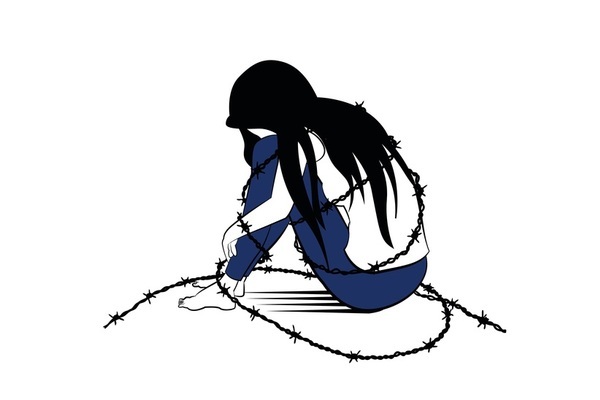
Grief is one of the hardest experiences what a human being can go through throughout their life. Although many people associate it with death, this phenomenon can also occur when our heart is broken or when we lose a job after many years in the same position; It occurs, in general, in situations in which something happens that we interpret as a loss.
Without a doubt, overcoming grief is complicated, so the person must go through a series of stages to become well again. It is a very painful experience and each individual has a personal way of experiencing it. In addition, There are several types of grief, which is why it is difficult to talk about a sequence of actions to take to assimilate this experience in the best possible way. In this article we delve into the different types of grief and their characteristics.
The 5 phases of grief
Over the years, some theories have appeared about the phases that a person who is in a period of grief goes through. One of the best known is that of psychiatrist Elisabeth Kübler-Ross published in 1969 in the book On death and dying.
His idea is based on the fact that there are 5 stages of grief. Now, these five phases do not always occur with the same placement and sequentially, that is, not all people in the grieving phase have to go through the 5 stages. Furthermore, when they pass through They do not always have to appear in the same order
According to Elisabeth Kübler-Ross’s theory, the stages of grief are:
1. Denial
The first phase is denial, which is characterized because the person does not accept reality (consciously or unconsciously). This occurs as a defense mechanism and is perfectly normal. In this way, the individual reduces the anxiety of the moment.
The real problem occurs when people get stuck in this stage because they cannot cope with the traumatic change, so they ignore it as a defensive response. The death of a loved one, of course, is not particularly easy to avoid and cannot be avoided indefinitely.
2. Anger or rage
The sadness can lead a person to suffer anger and rage and to look for blame This anger can manifest itself in different ways, blaming oneself or blaming others, and it can be projected against animals and objects.
3 – Negotiation
At this stage, pain leads to seeking a fictitious negotiation. In fact, many people who face death They try to negotiate even with a divine force
Other people, those suffering from minor trauma, may make other negotiations or compromises. For example “Can we still be friends?” or “I’m going to accomplish this for you.” Negotiation rarely provides a sustainable solution, but it can reduce the pain of the moment.
4 – Depression
The impact of the loss of someone close can lead a person to a very painful situation, which is accompanied by enormous sadness and an existential crisis, when realizing that that person disappears from their life. Although symptoms resemble depressive disorder once acceptance of the situation occurs, the symptoms subside.
5 – Acceptance
This stage happens when this painful situation has been accepted and It depends on each person’s resources to accept it sooner or later It is not a stage that represents joy, but rather emotional detachment and understanding of what may have happened. If the person spends a long time grieving and does not accept the situation, it is necessary to seek psychological help to overcome it.
Types of losses
Since the grief stage does not necessarily have to occur for the loss of a loved one, before moving on to the types of grief, we will move on to the different types of losses that can occur:
Not all losses generate grief However, depending on the resources or other psychological variables (such as self-esteem or lack of social skills) of each person, losses can cause discomfort and suffering for more or less time.
Types of grief
What are the types of grief there are? Below you can find the different types of grief.
1. Anticipated duel
Anticipatory grief is one that occurs before death has occurred It is common when a disease is diagnosed that has no cure. The grieving process is the usual one, in which the person experiences various anticipatory feelings and emotions that will prepare them emotionally and intellectually for the inevitable loss.
Anticipatory mourning is a prolonged mourning process, not as acute as the rest, given that when death comes it is usually experienced, in part, as something that gives calm.
2. Unresolved grief
Unresolved grief, as its name suggests, It means that the grieving phase is still present However, this is usually the name given to the type of grief that occurs when a certain amount of time has passed (between 18 and 24 months) and it has not yet been overcome.
3. Chronic grief
Chronic grief is also a type of unresolved grief, which It does not subside with the passage of time and lasts for years It is also called pathological grief or complicated grief.
Pathological grief can occur when the person is unable to stop reliving the events related to the death in detail and vividly, and everything that happens reminds them of that experience.
4. Absent mourning
This type of grief refers to when the person denies that the events occurred Therefore, it is the denial stage that we have talked about previously, in which the individual continues to avoid reality despite a lot of time having passed. That is, the person has remained stuck in this phase because he does not want to face the situation.
5. Delayed grief
It is similar to normal grief, with the difference that its onset occurs after a while. It is usually part of absent grief, and is also called frozen grief It usually appears in people who control their emotions excessively and appear apparently strong. For example, a person who has children and must appear whole.
Delayed grief usually occurs when the person who suffers from it, at first, You must take care of many things that require your immediate attention such as caring for a family.
6. Inhibited grief
Inhibited grief occurs when there is a difficulty in expressing feelings, so the person avoids the pain of loss. It is usually associated with somatic complaints. The limitations of the individual’s personality prevent him from crying or expressing grief. Unlike absent grief, it is not a defense mechanism.
7. Unauthorized Duel
This type of grief occurs when the environment that surrounds the person does not accept the person’s grief For example, when a long time has passed, the family reproaches the person for continuing to mourn. She represses her feelings towards her family, but internally she has not overcome it.
Many times, this type of grief occurs when the person who died or left forever had a stigma associated with it and was excluded, at least for the close environment of the person who suffers it (for example, his or her family). Expressing grief can become a symbolic act that subverts certain political and social ideas. For example, if the absent person was someone’s homosexual partner and the family does not approve of this type of relationship.
8. Distorted Duel
Distorted grief It manifests itself as a strong reaction disproportionate to the situation It usually occurs when the person has already experienced previous grief and is faced with a new grief situation.
For example, you may have experienced the death of a father, and when an uncle dies, you also relive the death of your father, which leads you to a much more intense, painful and disabling situation.








